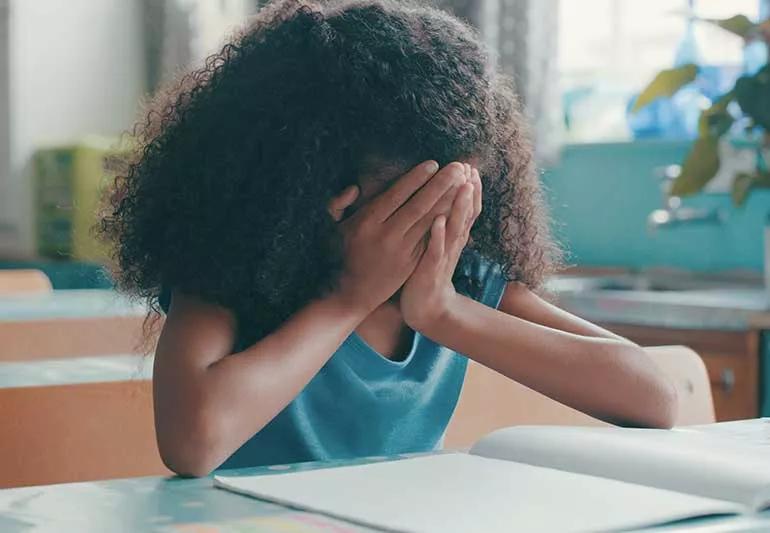A comprehensive test can help make a diagnosis

Attention-deficit hyperactivity disorder (ADHD) is a very common behavioral health condition. “It’s the most diagnosed condition in children around the world,” says Michael Manos, PhD, clinical director of the ADHD Center for Evaluation and Treatment.
Advertisement
Cleveland Clinic is a non-profit academic medical center. Advertising on our site helps support our mission. We do not endorse non-Cleveland Clinic products or services. Policy
According to the U.S. Centers for Disease Control and Prevention (CDC), about 6 million kids in America are living with ADHD. However, the signs and symptoms of ADHD can look like other conditions, too. So, how do doctors test kids for ADHD? Dr. Manos explains.
ADHD can be a very nuanced condition, which is why a pediatrician, psychologist, or psychiatrist with expertise in ADHD is needed for a proper diagnosis.
For example, inattention is easily overlooked because many kids who are very smart breeze through school while living with ADHD. “They can write their papers or do a big assignment at the last minute, for example, and get very good grades,” explains Dr. Manos. “They don’t have to pay attention as much, because they can hear one thing and make sense of it. In cases like these, kids may have ADHD that’s overlooked until they get to college.”
Although it might be obvious from a young age that your child is extremely active and acts impulsively, doctors don’t diagnose ADHD before the age of 3 or 4. “Impulsive behavior is easier to see in younger children, which is why some children get diagnosed much earlier than others,” explains Dr. Manos. “But diagnosing ADHD requires being able to know what’s expected from a child at a specific developmental level. And then the question becomes: Is your child exhibiting behavior that is outside of the norms for their developmental level?”
Advertisement
Dr. Manos says they spend a minimum of 90 minutes going through the diagnostic process because it has three parts.
First, doctors examine whether kids have the symptoms of behaviors that represent ADHD. The CDC has a list of these behaviors, divided into two categories: inattention and hyperactivity/impulsivity.
Kids under age 17 need to exhibit six symptoms of inattention and/or hyperactive/impulsive behaviors, while kids ages 17 and older and adults only need five. However, in either case, documenting these symptoms needs to be reported by at least two observers across two places (like home and school, for example).
Additionally, these behaviors must rise to the level of having a negative impact on your child’s day-to-day life — and having this impact over a long stretch of time. In other words, are these behaviors a consistent issue or do they just show up from time to time?
“The behaviors that we’re looking for with ADHD are behaviors that everybody shows at one time or another,” says Dr. Manos. “However, a kid having a one-time incident is not going to lead to an ADHD diagnosis. These are behaviors that are exhibited over time.”
For example, ADHD isn’t when your kid doesn’t get their work done once because they aren’t paying attention; after all, this happens to all of us. Instead, maybe your kid doesn’t finish a test multiple times across a few months, and it affects their grade. Or perhaps they don’t listen when asked to do small tasks over and over again, not just a few times.
It’s very common for children living with ADHD to also have depression or an anxiety disorder. That’s what’s known as having a comorbid, or secondary, condition.
But symptoms or behaviors associated with ADHD are also common symptoms or behaviors linked with other conditions. Maybe you think your child has ADHD — but really, it’s something else.
“Depression can often look like ADHD,” says Dr. Manos. “Depression can often look like inattentiveness. Anxiety can often look like even impulsive or hyperactive behavior because you’re constantly concerned about getting something done.”
Plus, a less-than-ideal environment can also affect your child’s behavior. For example, a child whose parents are fighting a lot might act out at school. Kids who don’t like following rules might receive more punishment, which can lead to ADHD-reminiscent behavior.
A good first step if you suspect ADHD is to take the list of symptoms from the CDC and discuss them with your child’s doctor. This can offer a good starting point for discussion.
“We have parents come in all the time and say, ‘Well, he’s just acting like a boy,'” Dr. Manos says. “Well, what does that actually mean? And how intrusive is this ‘acting like a boy’ getting to be in this child’s life or in other people’s lives?”
Advertisement
Doctors have also experienced patterns of behavior that point to ADHD and can talk through what parents see. “One of the common questions that I ask people who walk into my office seeking a diagnostic assessment is, ‘Are you easily self-critical?'” Dr. Manos says. “And the older a child is, the longer they’ve spent being self-critical.”
Typically, the tendency to be self-critical is associated with feeling “not good enough” or like “something must be wrong with me,” he adds. That could be a byproduct of inattentiveness — for example, maybe a student doesn’t hear instructions and needs to be reminded constantly to do certain tasks, and then because of that, a teacher might make accommodations to repeat directions.
“In response, a child resolves that there must be something wrong with them and thinks, ‘How come I can’t do it like other kids?'” Dr. Manos says. “So, being self-critical is a very consistent phenomenon with ADHD.”
Getting an ADHD diagnosis is the first step toward reframing your kid’s brain and self-perception.
“The tendency to be disorganized produces a feeling of being overwhelmed, irritable or agitated,” Dr. Manos indicates. “But people can actually discern that the concerns they have about themselves may be attributable to how the ADHD brain works rather than that they themselves are a bad person. Instead, they can see themselves as having a different brain function. The brain of an ADHD person works differently.”
Advertisement
Research has shown that successful treatment for ADHD often involves a combination of behavioral therapy and medication, fine-tuned and adapted for each child. “The decision to take medicine is up to a child (when they’re old enough) and their parents,” Dr. Manos says. “But studies indicate that when you use very good behavioral intervention, you can reduce the dosage of medicine given to a child or an adult.”
Families can also work together to develop an organizational system that works for a kid so they can keep track of what they need to do. “This exists in the physical world so you can refer to it at any time, rather than to try and keep everything straight in the brain,” Dr. Manos says. “In childhood, parents keep track of that for kids. And then as kids advance grade levels, they become more and more in charge of self-organization themselves and devise their own organizational systems.”
It’s also important to note that as children with ADHD get older, their symptoms can change. According to the National Institute of Mental Health, young children tend to experience hyperactivity-impulsivity. As they start elementary school, a child’s symptoms may shift to inattention. As adolescents, they may become less hyperactive but may struggle with feelings of restlessness, inattention and impulsivity.
Advertisement
But there’s no age ceiling for an ADHD diagnosis. Dr. Manos says he’s even seen and treated someone who was 74 years old. In other words, it’s never too early — or too late — to get an ADHD diagnosis. “Many times, I don’t think ADHD needs to be considered a mental health disorder as much as it is learning how to effectively manage a brain that functions differently.”
To hear more about ADHD from Dr. Manos, listen to the Health Essentials Podcast episode, “ADHD and Kids.” New episodes of the Health Essentials Podcast publish every Wednesday.
Learn more about our editorial process.
Advertisement

Background stimulation and intentional fidgeting may actually help you stay on task

A booster dose, healthy snack and some downtime may help ward off a medication rebound

Working side by side with another person can improve focus, build accountability and provide motivation to get a task done (or at least started)

The medical condition isn’t a learning disability and doesn’t always cause hyperactivity

There are times and cases when physician-supervised breaks may be beneficial

Using time management tools, adopting new approaches and allowing for a little grace can help meet deadlines and finish tasks

Boys might seem disruptive, while girls might seem inattentive, but ADHD isn’t a sex-specific condition

Both meds have similar benefits and side effects

If you’re feeling short of breath, sleep can be tough — propping yourself up or sleeping on your side may help

If you fear the unknown or find yourself needing reassurance often, you may identify with this attachment style

If you’re looking to boost your gut health, it’s better to get fiber from whole foods